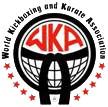


The initial difference between the WKA and the PKA was the WKA’s allowance of foot sweeps below the knee and roundhouse kicks to the outside of the thigh above the knee (the PKA’s rules permitted no kicks below the belt). Further, after it had developed, the WKA was operating internationally with some fourteen member nations, the most active being the United States, Canada, Mexico, Australia, Japan, Hong Kong, Holland, and the United Kingdom. American and European fighters were frequently matched with Muay Thai fighters from Southeast Asia. In 1982, the WKA sanctioned approximately 30% of all events worldwide.
WKA promoters retained all gate revenues from sanctioned events as well as a negotiable percentage of any television revenues. The organization has secured network broadcasts in the United States and Japan, as well as an assortment of syndication arrangements. Both the PKA and the WKA attempted to make promotional inroads into Europe but with limited success. Unlike in the U.S., the development of Full Contact Karate (kickboxing) in Europe has been more influenced by nationalism and governmental interference than by pursuit of television revenues, although in 1982, European organizations sanctioned approximately 20% of all events worldwide. In 1977, the WKA and the AJKBA (All Japan Kickboxing Association) agreed to affiliate for the purpose of international competition conducted under compromise rules, which prohibited elbow and knee strikes, and to recognize each other’s champions. Benny Urquidez, Kunimasa Nagae, Alvin Prouder, and Howard Jackson became the first internationally recognized world champions. In the early 1980s, AJKBA merged with the WKA, fully adopting the WKA’s rules; WKA Japan became Japan’s major sanctioning body. WKA Japan frequently broadcast bouts over Japanese television networks and also promoted events outside Japan, Korea, Thailand, Pakistan, and Hong Kong. WKA Japan’s leading stars have included Kunimatsu Okao, Yoshimitsu Tamashiro, Benny Urquidez, Kunimasa Nagae, Genshu Igari, Yasuo Tabata, and Hirousi Takahashi.
A PKA event held at Los Angeles Sports Arena on October 1, 1976 marked the beginning of the association’s contractual arrangement with CBS Sports as well as the merger attempt with promoter Howard Hanson of Westminster, California. The CBS deal eventually accounted for four network broadcasts per year of PKA-sanctioned world title fights. Critics accused the PKA of conflicts of interest. The organization was operating both as a sanctioning body and, through Sport Karate, Inc., a sister corporation, as a promotional body. PKA principals, Don and Judy Quine, countered by claiming that the sport’s survival depended on their synthesis of its various activities. The PKA sanctioned a total of 19 events in 1976.
After his merger attempt with the PKA soured, Howard Hanson formed the World Karate Association (WKA), a Full Contact sanctioning body that became the PKA’s strongest competitor. As its president, Hanson survived by arranging promotions in Japan, pitting Japanese kickboxers against American full contact Karate fighters, using a combination of the two sports’ rules. After the PKA stripped Benny Urquidez of his Lightweight title in 1977, the champion fought predominately in the WKA and quickly established himself as a superstar in Asia, where he defeated every kickboxing challenger and champion he fought. The bitterest conflict between PKA and WKA was a dispute over rules. The WKA advocated (and continues to advocate) the use of leg kicks, while the PKA rigidly opposed them. The issue was one of potential injury to athletes. The PKA maintained that these techniques are dangerous to a fighter’s physical safety and his or her career longevity. Hanson parried this charge by citing Asian competition, where some kickboxing champions remain active after more than fifty fights where leg kicks, at their most vicious, are employed.
In 1977, Benny Urquidez refused to sign an exclusive contract with the PKA and was stripped of his title; he was then recruited by Howard Hanson to fight in Asia under the WKA banner. Urquidez went to Japan and became the first American fighter ever to beat Japanese kickboxers under their own rules. Urquidez scored a knockout over champion Katsuyuki Suzuki on August 2, before a nationally televised audience in Japan. His victory amounted to a national insult to the Japanese. Following his win, retired and undefeated champion Kunimatsu Okao publicly challenged Urquidez to a bout for which he would come out of retirement. Urquidez accepted. On November 14, at the prestigious Budokan in Tokyo, the two men met in a vicious showdown resulting in an Urquidez victory. Bloody and battered, Okao was knocked out cold in the fourth round and had to be helped from the ring. The bout was carried over Japanese national television and drew an unprecedented $500,000 live gate, the largest on record for professional kickboxing.
The victory brought Urquidez’s record to 40-0 with 38 knockouts, the best in the sport, and made him an international celebrity. He also represented his sport in a Japanese documentary, “Kings of the Square Ring,” which also featured boxing’s Muhammad Ali and wrestling’s Antonio Inoki. WKA world champion Howard Jackson became the first kickboxing champion to enter professional boxing and win. Within one year, Jackson amassed a professional boxing record of 14-1-2 with 11 knockouts. Since1977, Jackson’s precedent has led the way for other Karate/kickboxing athletes to pursue dual careers.